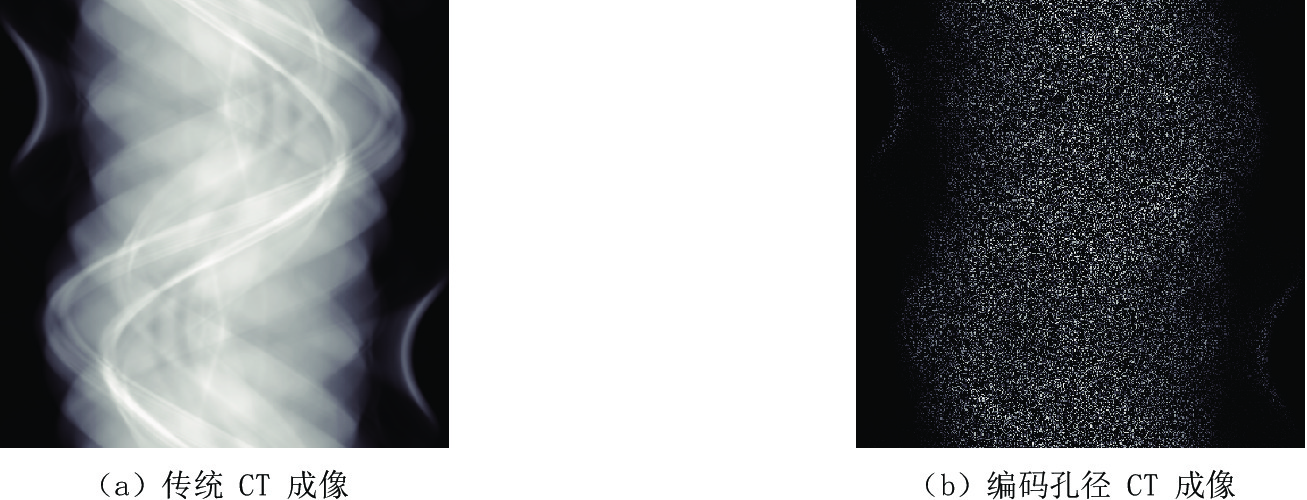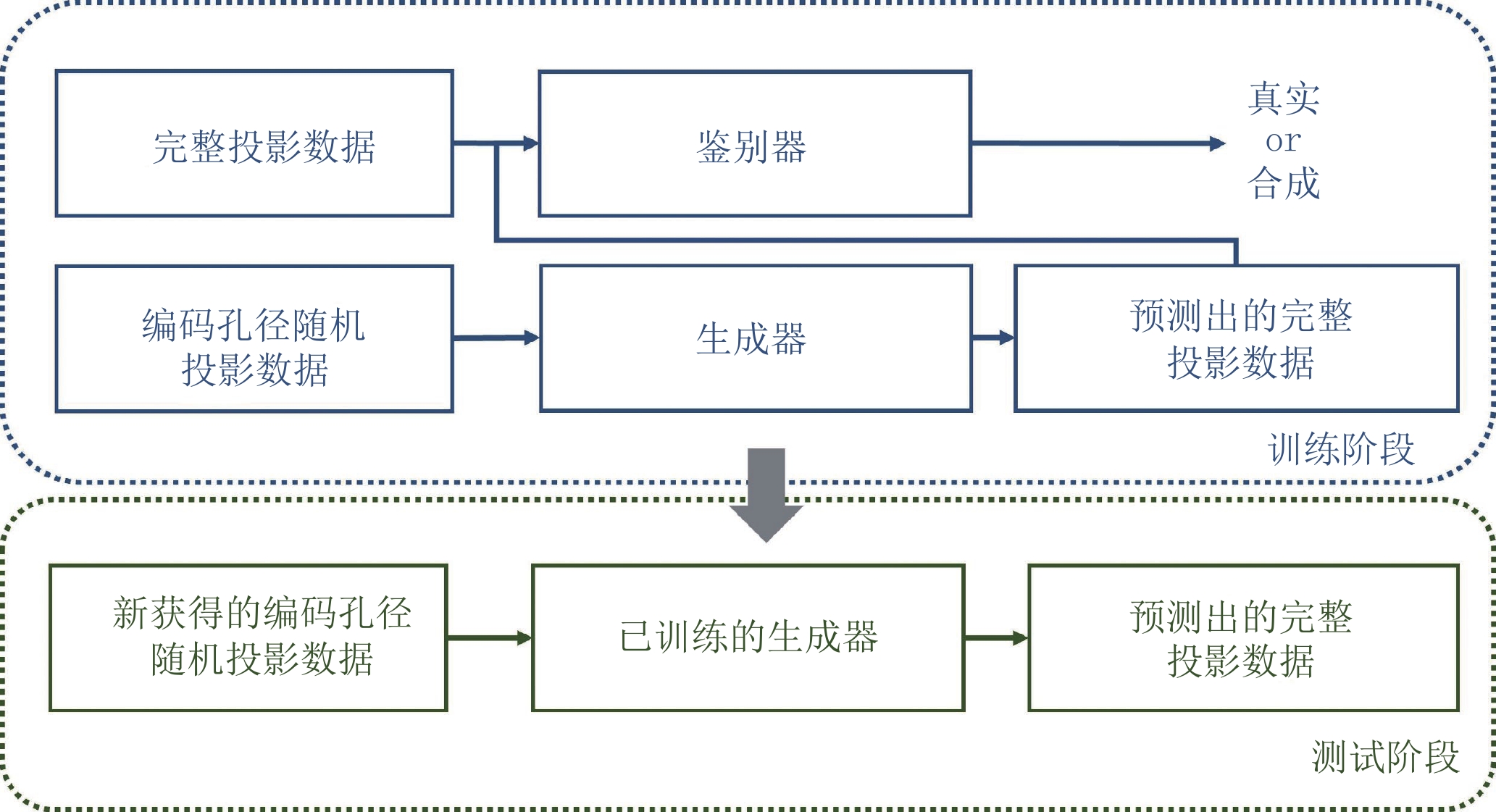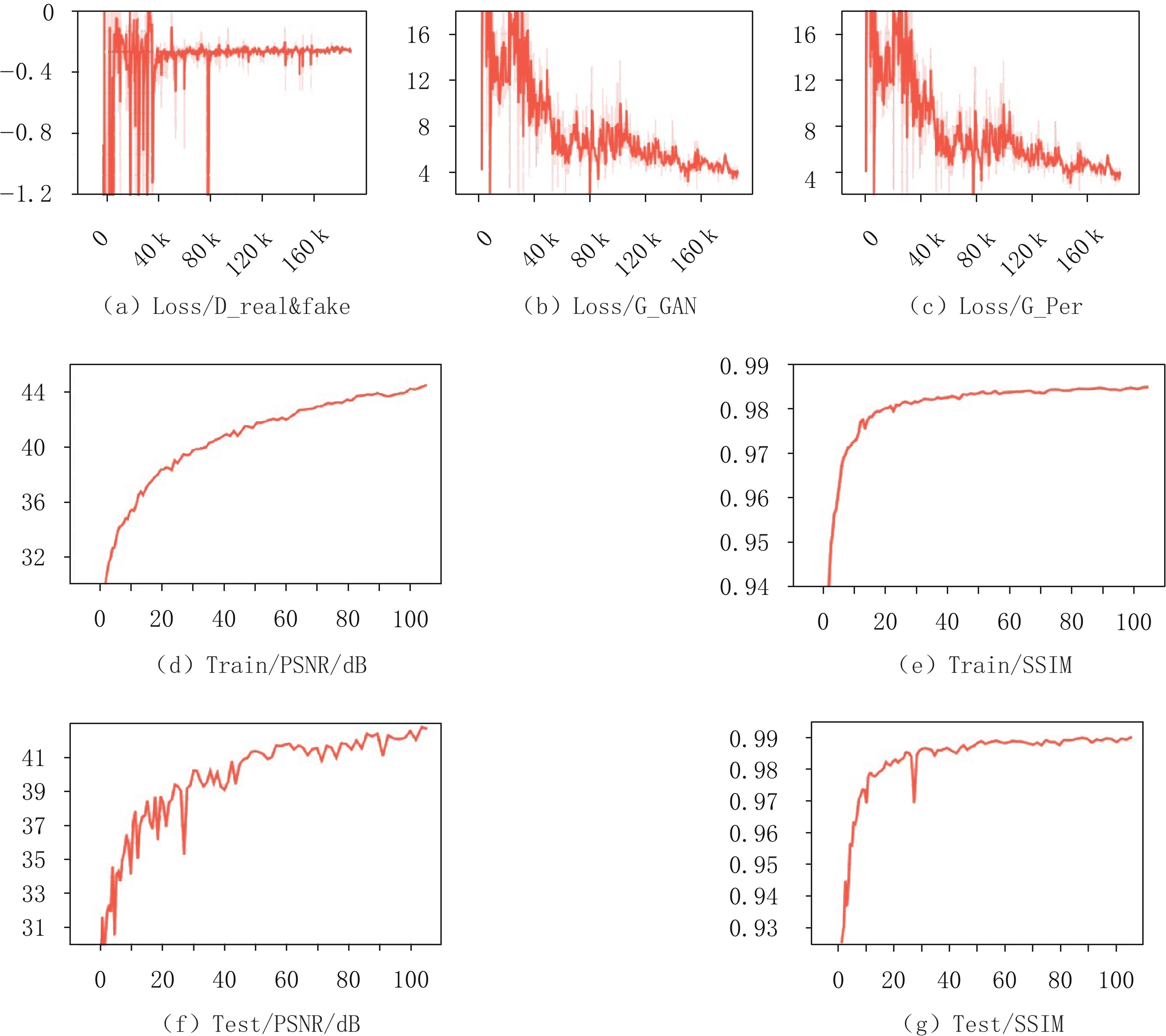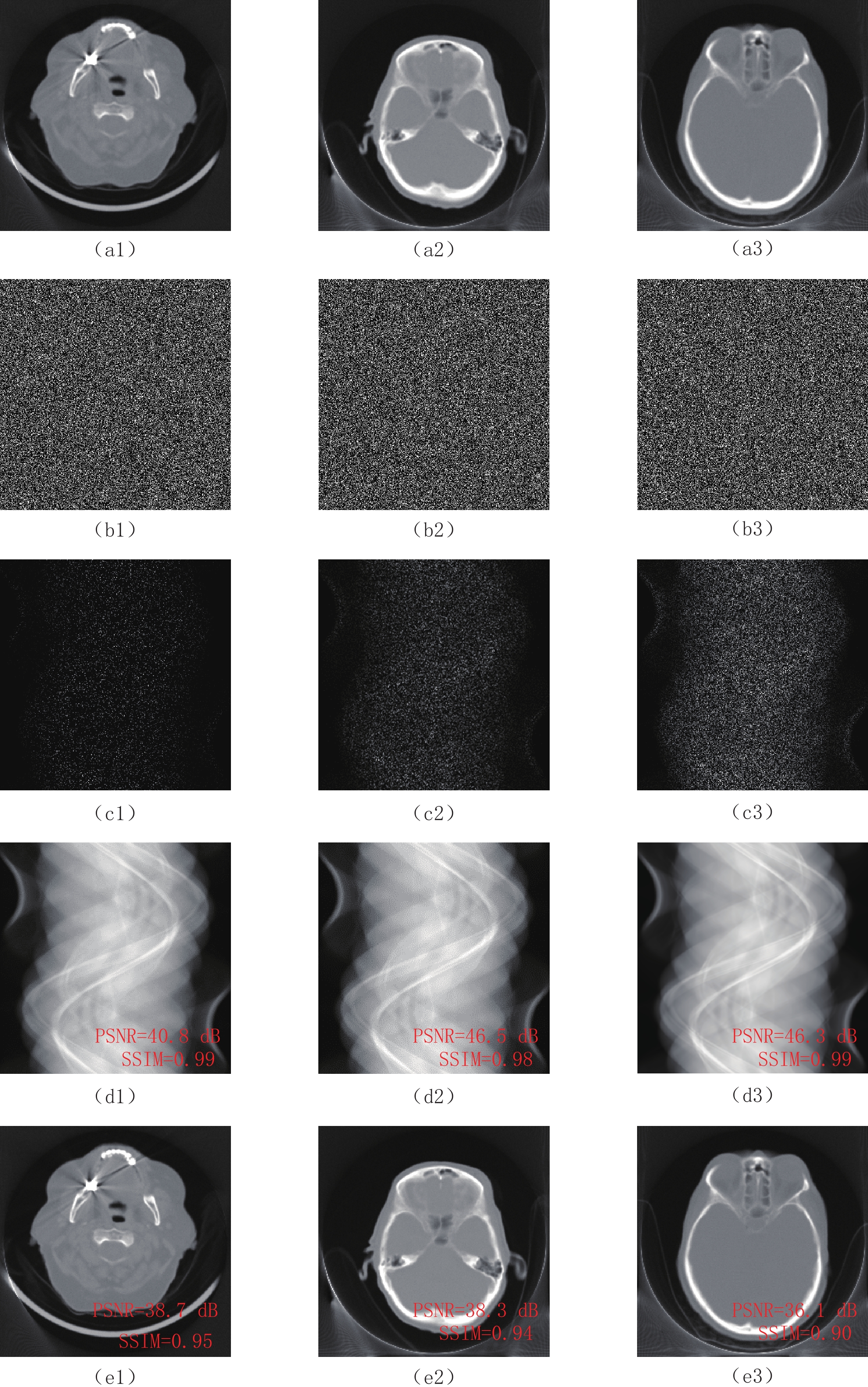Coded Aperture Computed Tomography Via Generative Adversarial U-net
-
摘要: 针对编码孔径CT成像非连续稀疏采样只能通过代数类迭代重建算法的缺点,本文提出一种基于U型生成对抗网络的编码孔径CT成像方法。通过构建基于U型生成对抗网络的非连续稀疏投影的动态博弈模型,结合联合损失函数,预测正弦图的结构性缺失,实现编码孔径CT成像分析类(非迭代)快速重建。实验结果表明,在辐射剂量降低95% 的条件下,基于U型生成对抗网络的编码孔径CT成像方法实现了峰值信噪比大于30 dB @ 256×256的高质量重建。相比于目前最先进的编码孔径CT成像方法,其重建时间降低了约两个数量级。Abstract: Generative adversarial U-net for coded aperture computed tomography (CT) is proposed in this paper to alleviate the tradeoff between the non-continuous sparse projections and the ill-posedness iterative reconstruction problem. A non-continuous sparse projection model is presented based on generative adversarial U-net and the corresponding joint penalty function is formulated. Simulations using real datasets show that CT images with 256×256 pixels can be reconstructed with peak signal-to-noise ration more than 30 dB at only 5% transmittance. Furthermore, the computational time in the reconstructions is reduced by two orders of magnitude when compared with the state-of-the-art iterative algorithms in coded aperture computed tomography.
-
Keywords:
- computed tomography /
- coded aperture /
- generative adversarial net
-
-
表 1 不同编码掩膜板透过率下,测试集中预测的正弦图和CT重建图像的平均值
Table 1 The average results of sonograms and CT reconstructions at different transmission rates
测试数据集 图像质量评价指标 编码掩膜板透过率 5% 10% 15% 20% 25% 预测的正弦图 PSNR/dB 39.1 41.6 40.9 42.6 43.8 SSIM 0.98 0.97 0.98 0.99 0.98 CT重建图像 PSNR/dB 33.7 32.0 33.5 35.3 33.6 SSIM 0.88 0.88 0.89 0.91 0.90 -
[1] KALENDER W A. Computed tomography: Fundamentals, system technology, image quality, applications[M]. John Wiley & Sons, 2011.
[2] KALENDER W A. X-ray computed tomography[J]. Physics in Medicine & Biology, 2006, 51(13): R29.
[3] WILLEMINK M J, PERSSON M, POURMORTEZA A, et al. Photon-counting CT: Technical principles and clinical prospects[J]. Radiology, 2018, 289(2): 293−312. doi: 10.1148/radiol.2018172656
[4] FUCHS T, KACHELRIE M, KALENDER W A. Technical advances in multi-slice spiral CT[J]. European Journal of Radiology, 2000, 36(2): 69−73. doi: 10.1016/S0720-048X(00)00269-2
[5] ZHU Z, WAHID K, BABYN P, et al. Improved compressed sensing-based algorithm for sparse-view CT image reconstruction[J]. Computational and Mathematical Methods in Medicine, 2013: 185750:1−185750:15.
[6] MCCOLLOUGH C H, LENG S, YU L, et al. CT dose index and patient dose: They are not the same thing[J]. Radiology, 2011, 259(2): 311−316. doi: 10.1148/radiol.11101800
[7] CHOI K, BRADY D J. Coded aperture computed tomography[C]//International Society for Optics and Photonics. Adaptive Coded Aperture Imaging, Non-Imaging, and Unconventional Imaging Sensor Systems. 2009, 7468: 74680B.
[8] JEREZ A, MARQUEZ M, ARGUELLO H. Adaptive coded aperture design for compressive computed tomography[J]. Journal of Computational and Applied Mathematics, 2021, 384: 113174. doi: 10.1016/j.cam.2020.113174
[9] ZHANG T, ZHAO S, MA X, et al. Nonlinear reconstruction of coded spectral X-ray CT based on material decomposition[J]. Optics Express, 2021, 29(13): 19319−19339. doi: 10.1364/OE.426732
[10] YAN K, LI D, HOLMGREN A, et al. Compressed sampling strategies for tomography[J]. Journal of the Optical Society of America A, 2014, 31(7): 1369−1394. doi: 10.1364/JOSAA.31.001369
[11] ZHAO Q, MA X, CUADROS A, et al. Single-snapshot X-ray imaging for nonlinear compressive tomosynthesis[J]. Optics Express, 2020, 28(20): 29390−29407. doi: 10.1364/OE.392054
[12] TZOUMAS S, VERNEKOHL D, XING L. Coded-aperture compressed sensing X-ray luminescence tomography[J]. IEEE Transactions on Biomedical Engineering, 2017, 65(8): 1892−1895.
[13] MOJICA E, PERTUZ S, ARGUELLO H. High-resolution coded-aperture design for compressive X-ray tomography using low resolution detectors[J]. Optics Communications, 2017, 404: 103−109. doi: 10.1016/j.optcom.2017.06.053
[14] CUADROS A, MA X, ARCE G R. Compressive spectral X-ray tomography based on spatial and spectral coded illumination[J]. Optics Express, 2019, 27(8): 10745−10764. doi: 10.1364/OE.27.010745
[15] CUADROS A P, MA X, RESTREPO C M, et al. Static code CT: Single coded aperture tensorial X-ray CT[J]. Optics Express, 2021, 29(13): 20558−20576. doi: 10.1364/OE.427382
[16] CUADROS A P, LIU X, PARSONS P E, et al. Experimental demonstration and optimization of X-ray static code CT[J]. Applied Optics, 2021, 60(30): 9543−9552. doi: 10.1364/AO.438727
[17] MA X, YUAN X, FU C, et al. LED-based compressive spectral-temporal imaging[J]. Optics Express 2021, 29(7): 10698-10715.
[18] CUADROS A P, ARCE G R. Coded aperture optimization in compressive X-ray tomography: A gradient descent approach[J]. Optics Express, 2017, 25(20): 23833−23849. doi: 10.1364/OE.25.023833
[19] CUADROS A P, PEITSCH C, ARGUELLO H, et al. Coded aperture optimization for compressive X-ray tomosynthesis[J]. Optics Express, 2015, 23(25): 32788−32802. doi: 10.1364/OE.23.032788
[20] MEJIA Y, ARGUELLO H. Binary codification design for compressive imaging by uniform sensing[J]. IEEE Transactions on Image Processing, 2018, 27(12): 5775−5786. doi: 10.1109/TIP.2018.2857445
[21] MAO T, CUADROS A P, MA X, et al. Fast optimization of coded apertures in X-ray computed tomography[J]. Optics Express, 2018, 26(19): 24461−24478. doi: 10.1364/OE.26.024461
[22] SWINEHART D F. The beer-lambert law[J]. Journal of Chemical Education, 1962, 39(7): 333. doi: 10.1021/ed039p333
[23] MAO T, CUADROS A P, MA X, et al. Coded aperture optimization in X-ray tomography via sparse principal component analysis[J]. IEEE Transactions on Computational Imaging, 2019, 6: 73−86.
[24] YI X, WALIA E, BABYN P. Generative adversarial network in medical imaging: A review[J]. Medical Image Analysis, 2019, 58: 101552. doi: 10.1016/j.media.2019.101552
-
期刊类型引用(1)
1. 司武杰,何韬,陈萍,张家奎. 光谱CT不同单能量图像在头部CT检查患者的应用及对比. 中国实用神经疾病杂志. 2025(01): 73-77 .  百度学术
百度学术
其他类型引用(0)



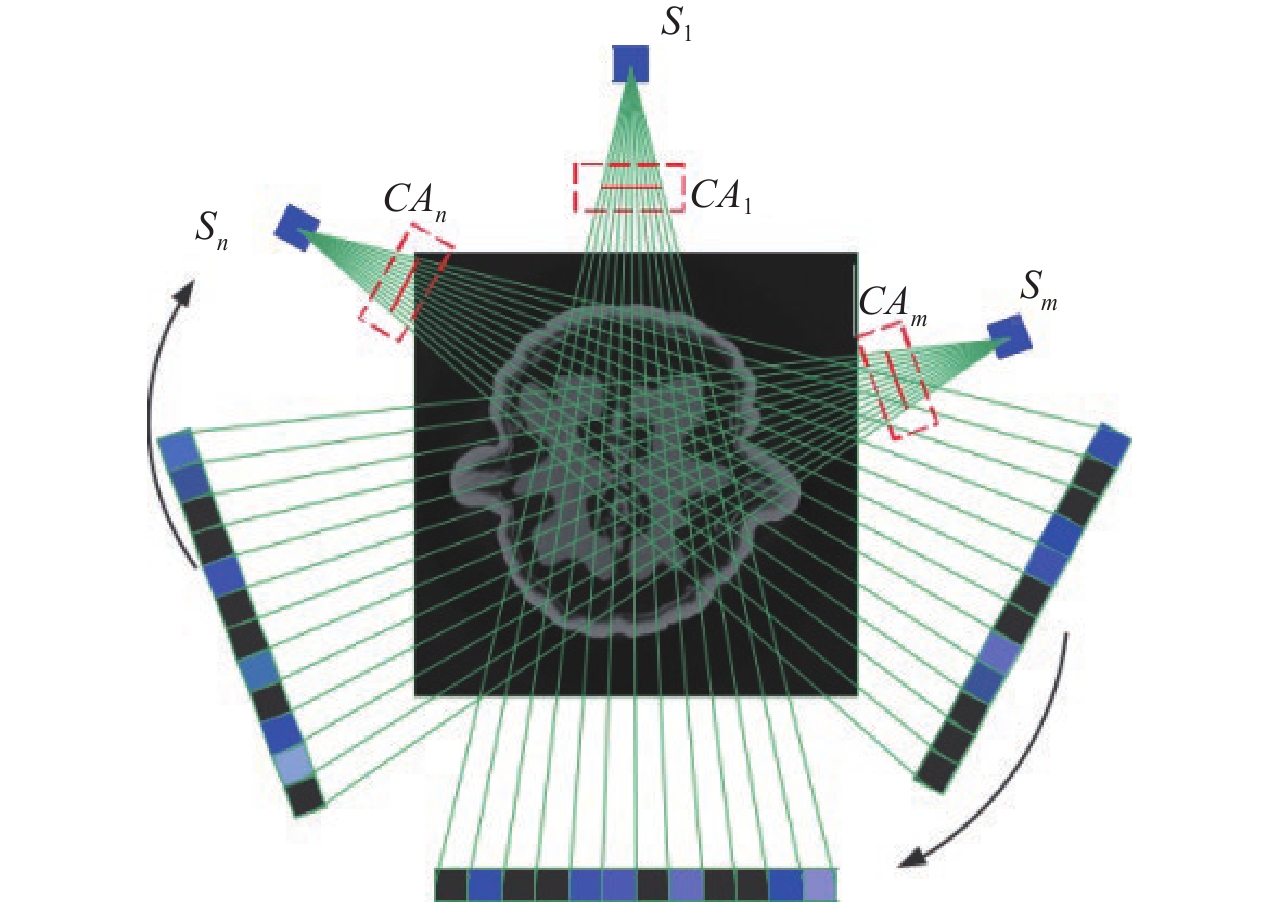
 下载:
下载:
